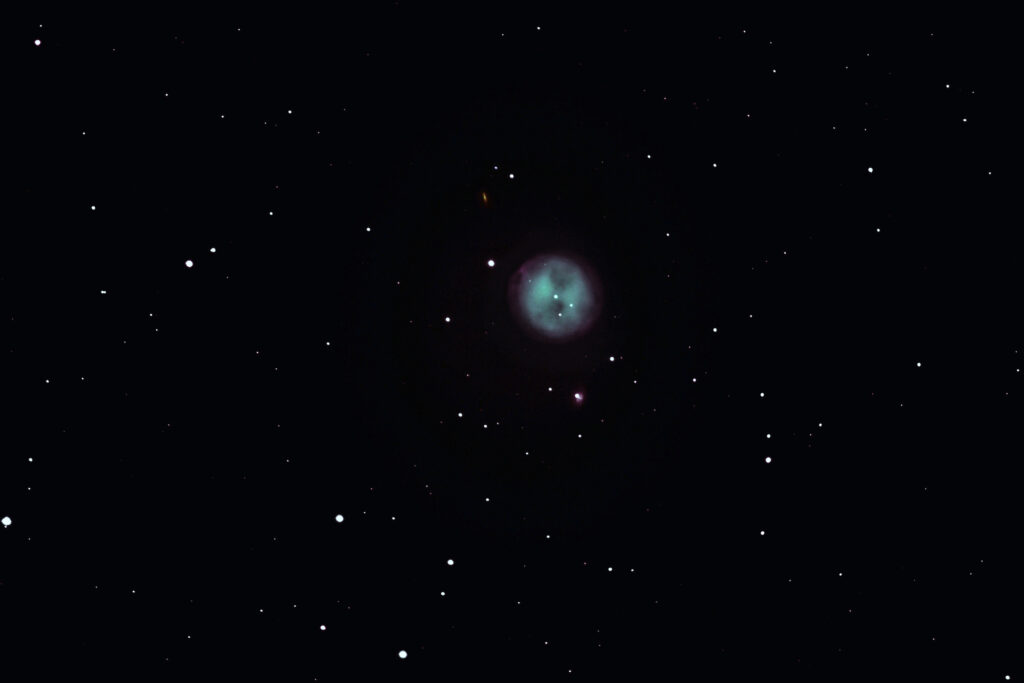A planetary nebula about midway between the two stars in the "big dipper" comprising the bottom of the "bowl." This ghostly owl-like object is the expanding remnant of a star that exploded several thousands of years ago.
The estimated distance of M97 is 2,600 years, and its "angular size" is 3.4 arcminutes. If distance and angular size are known, then actual size can be easily computed with the following equation: actual size = 0.00029 x distance x angular size (in arcminutes). According to this geometric equation, M97 has an actual diameter of 2.5 light years, which is near the upper limit of the size of a planetary nebula due to the inverse relationship between their expanding size and luminosity.
Note two remote galaxies in this field. One is the bright "flare" adjacent to a foreground star below the nebula. This is PGC 34279 (mag14.3). The second is the small sliver above and to the left of the nebula. This is PGC 2490640 (mag 17.4).
The "Owl Nebula" (M97) in Ursa Major
Date Taken:January 21, 2009
Location Taken: Conditions of Location:FWHM 1.78
Equipment Used:14.5" Ritchey-Chretien telescope, SBIG STL11000 CCD camera, Astrodon RGB filters, TCC, PIR, remote guide head used with Takahashi Sky90 for autoguiding, T-Point used for polar alignment (required for each imaging session due to my portable setup).
Processing Used:10 x 600 seconds luminance, 6 x 300 seconds RGB, guided, 1x1 binning, processed in Maxim DL and Photoshop (total exposure 3 hours 10 minutes).
Distance from Location:2,600 light years
Constellation:Ursa Major (the "big bear")
Other Link:
